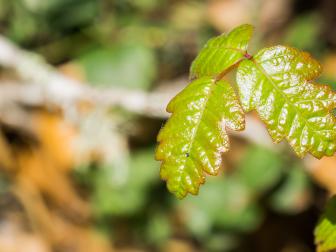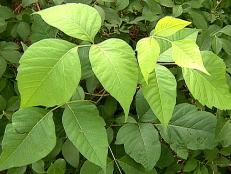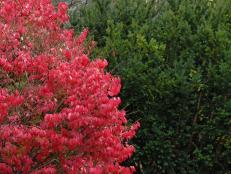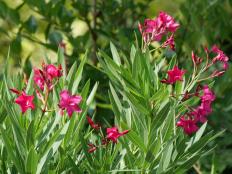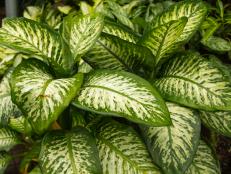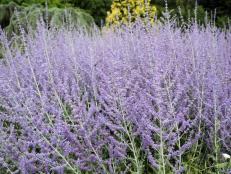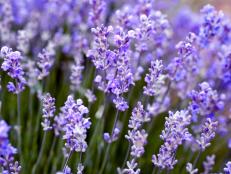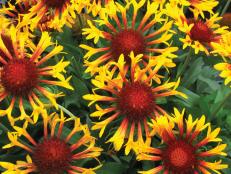Poison Plants: Identifying Poison Ivy, Poison Oak and Poison Sumac
Exercise extreme caution when it comes to these and some other common plants around your home and garden.


If you’ve ever come home from a hike in the woods, or after working in your own yard, and found yourself covered with an itchy, red rash, you’ve probably encountered poison ivy, poison oak or poison sumac.
The rash is painful, and it starts after you’ve brushed against any part of these plants. The leaves, vines and even the roots contain a natural oil called urushiol that causes allergic reactions in most people — up to 80 or 90 percent of us, according to the Centers for Disease Control and Prevention.
Worse, the rash is tough to get rid of. Although you can buy over-the-counter medications, or visit your doctor if you need something stronger, you can scratch until the rash turns into ugly bumps or oozing blisters that last for up to three weeks. Scientists say urushiol can cling to your clothes, shoes and garden tools for up to a year. Pets who wander through a patch of these poisonous plants won’t get the rash — but you can, if the oil is transferred from their fur to your skin.
The best defense is a good offense. That is, it’s better to learn how to spot these unpleasant plants, than to accidentally touch them and have to treat the rash later. Remembering the old saying, “leaves of three, let it be” is a good place to start, although there are species of these plants with more than three leaflets.
Just be aware that not all plants with leaves in groups of three are poisonous. And although poison ivy, poison oak and poison sumac often lurk in the woods, they can also grow in sunny areas. Use these tips to help you spot these bad boys of the plant world:
Poison Ivy
Poison ivy grows as a ground cover, a low shrub or even as a vine that scrambles up trees across most of the United States. The leaves start out solid green, in clusters of three per stem.
They can be dull or glossy, and have pointed tips. Thin, aerial roots on the vines give them a fuzzy, or hairy, appearance.
In summer, the plants produce yellow-green flowers that are followed by whitish berries. By fall, the leaves become yellow and red. The CDC says that poison ivy grows across the U.S., except for California, Alaska and Hawaii.
How to ID Poison Ivy
Learn how to avoid this bothersome plant.
How to Kill Poison Ivy
Get five methods for eradicating poison ivy.
Poison Oak
The leaves of this plant look a lot like oak leaves, and like poison ivy, they usually grow in clusters of three. But some kinds of poison oak have five, seven or nine leaves per cluster.
Poison oak usually grows as a shrub in the Southeast or along the West Coast. It bears clusters of greenish yellow or white berries.
How to Identify and Get Rid of Poison Oak Plants
Learn how to recognize and eradicate noxious poison oak from your landscaping.
Poison Sumac
This plant likes to grow in swampy locations, and is often found along the Mississippi River or in boggy areas throughout the Southeast. It also breaks the rule that says, “Leaves of three, let it be,” because it typically has seven to 13 leaflets arranged in pairs.
The leaves sometimes have black or dark brown spots that are filled with urushiol. In autumn, the leaves turn red, yellow and pinkish. Poison sumac typically grows into a woody shrub with glossy cream or pale yellow berries.
Once you’ve identified poison oak, poison ivy or poison sumac, you can pull them up if you are very careful to wear protective clothing, eyewear, gloves and shoes. But wash your clothes as soon as you’re finished, and rinse your washing machine thoroughly, to be sure all traces of the oil are removed. It’s easier to pull the plants when the soil is moist, but be aware that the plants will re-sprout from any root pieces that you miss.
You can also spray the plants with an herbicide like Roundup. Read and follow the manufacturer’s directions, and be careful not to get the spray on your desirable plants. You may have to spray more than once.
And whatever you do, don’t burn any parts of these plants. The smoke can carry urushiol into your lungs and cause serious health problems. Even people standing downwind from burning plants may be at risk.
When it comes to poison oak, ivy and sumac, it really is a jungle out there. Be careful!
Many other plants can be toxic to humans if ingested. While it’s unlikely that adults will try to eat or chew the following plants, it’s important to know they can be harmful and even fatal, particularly to children.
While this is not a complete list, use caution when growing or handling these common plants in your home and garden:
- Dumb cane
- Azalea
- English ivy
- Oleander
- Philodendron
- Narcissus
- Iris
- Foxglove
- Bleeding heart
- Jasmine
- Mistletoe
- Common holly
Plants can also poison pets and other animals. This is only a sampler of plants that are toxic to them. Visit the ASPCA for more information:
- Aloe
- Amaryllis
- Begonia
- Caladium
- Corn plant
- Gardenia
- Dumb cane
- Hibiscus
- Lily of the valley
- Mums
- Norfolk Island pine
- Pothos
- Snake plant
- Tomato plant
- Vinca
For more information on poisonous plants, check out the information gathered by Texas A&M University.








